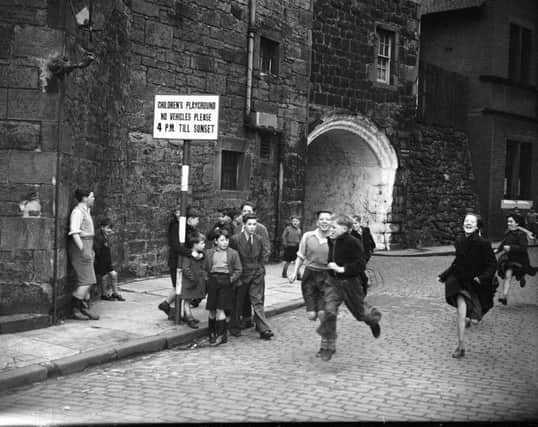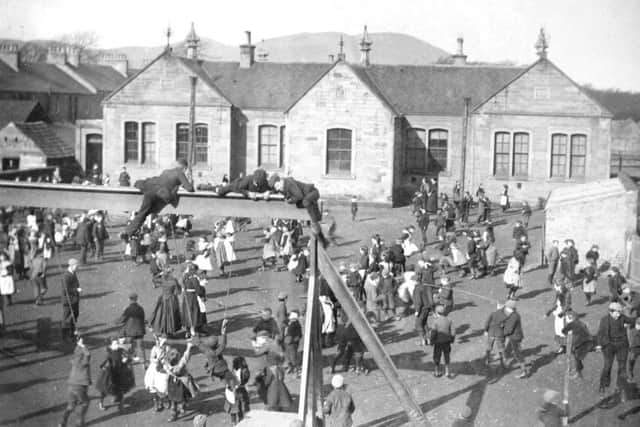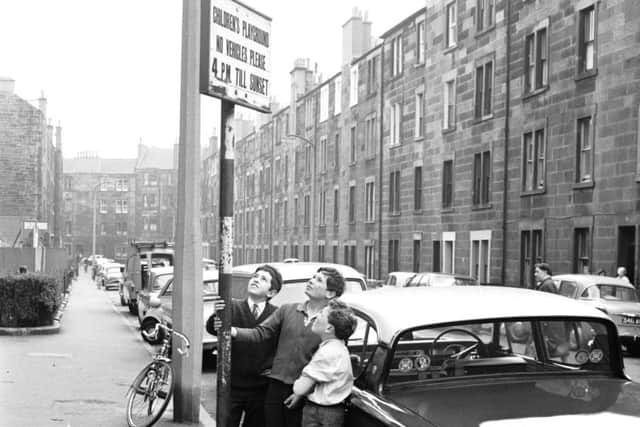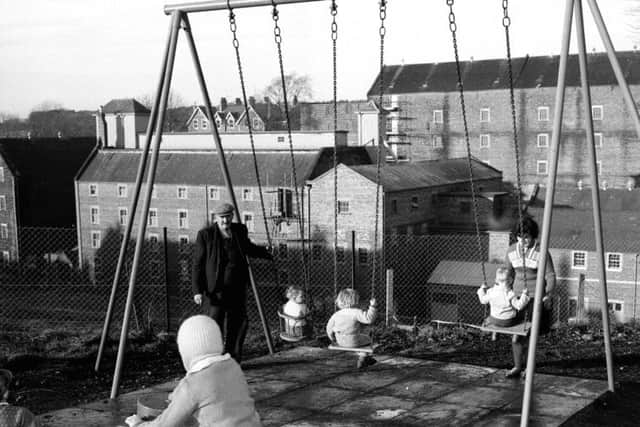Scottish playground games of the 20th century


The street games and songs of Scotland’s young once filled back courts, playgrounds and tenement stairwells up and down the country.
The chants and rhymes were described back in the 1800s as “Scotland’s natural literature”, forged in the mother tongue and passed down generation to generation and from brother to sister, as were the games that kept them entertained for free.
Advertisement
Hide AdAdvertisement
Hide AdThey survived through the 20th Century with some variations certainly in play up to the 1980s.


They reflect a time when children played safely in the street, families perhaps stayed rooted in neighbourhoods for a long time and siblings were charged with the care of the family’s youngest members - long before television and computer consoles did the job.
Much work has been done to document the history of children’s play time in Scotland, principally by former Edinburgh physics teacher James TR Ritchie in his books The Singing Street and Golden City.
Much of his research has centred round child’s play in Edinburgh but as he noted in 1965, the songs and games were, at root, part of the fabric of childhood across the whole country.


Here we look at how we “played out” in the past, as documented in Ritchie’s Golden City.
GAMES
Wembley
Street football teams were often known as “Back-green Windie-Breckers”. Wembley had the goalie as England and the rest of the players as Scotland. Scotland doesn’t go into the penalty box, with the goalkeeper flinging out the ball and Scotland heading it back. If Scotland kicks the ball, it’s a goal to the goalie.


Best Man Falls Dead
A cowboys and Indians-style game, where the cowboy has the gun and the Indians take up their position. All are numbered and they attack the cowboy in the order of their numbers. When they all lie dead, the cowboy tickles them under the chin. The one that doesn’t move - the deadest - is the next cowboy. The cowboy always wins.
Chickenellie, chap door run or knock down ginger
Not covered by Ritchie but possibly a staple of childhoods everywhere. Fuelled by an element of dare, whoever was ‘it’ knocked as urgently as possible on the front door of a neighbour before running as fast as possible from the scene, preferably taking cover behind a bush - or later a parked car. The real test was to go back quickly for a second shot - and not get caught.


Collie Back Fights
Advertisement
Hide AdAdvertisement
Hide Ad“Gie’s us a collie” is the Scots for a piggy back. In the east, also known as cuddie back, after a horse. Also ‘high shoother’ or shoulder-top fights for the brave.
Semolina
Like hide and seek, but nobody looks for anybody. The one who is ‘it’ turns away and lets the others hide. After the players shout they are ready, the person has to shout out where they could be hiding. If they are right, the person located is the next one it.
Pitch and toss
Well-remembered and disliked by parents due to its gambling associations. Players throw a penny from a flat open palm to a wall. The one that lands closed to the wall keeps all the coins played.


Single or double baillie
Catch games with a verse to keep the motion of the ball going as its thrown in a pattern off the ground and onto a wall or under alternating legs, for example.
One verse could be:
Charlie Chaplin went to France,
To show the ladies how to dance,
First your heel and then your toe,
Lift your skirts and through we go!
Skipping
Doesn’t need much description but a game once played by most girls from an early age. Now perhaps regarded more for its fitness benefits among an older crowd. In the past, girls would normally ‘call in’ their friends to the rope, and the pair would jump together.
Rhymes would be sometimes be chanted to keep the rhythm, such as
Whistle while you work!
Jenny made a shirt:
Jessie wore it, Bennie tore it
Mary made it worse!
Or sometimes Grannie in The Kitchen, which would help the changeover of the second skipper
Grannie in the kitchen
Doin’ some stitchin’
In comes the bogey man
And chases grannie oot!
Another singing song found in Edinburgh was Who’s Got Feet?:
Who’s got feet
Like Arthur’s seat?
Who’s got a bunion
Like a pickled onion?
Who’s got legs
Like ham and eggs?
Who’s got eyes
Like apple pies?
Who’s got lips
Like greasy chips?
Who’s got a nose
Like a big fat rose?
Who’s got slippers
Like great big kippers?
Advertisement
Hide AdAdvertisement
Hide AdSkipping also partly-evolved into elastics - or American ropes - around the 1960s, with children piecing together a long length of elastic bands that were hooked around the ankles of two players.
Who’s it?
Many older games needed a number of people to play so rhymes would help select who was on the team. Who was ‘it’ was usually the person that the last syllable fell upon.
My Mother and Your Mother was a popular choice:
My mother and your mother
Were hanging out their clothes
My mother gave your mother
A dunt on the nose
What was the colour of the blood?
Green
G-R-E-E-N spells green
You are out!
And another is
ABC
My Grannie caught a flea
She salted it and peppered it
And took it for her tea.
